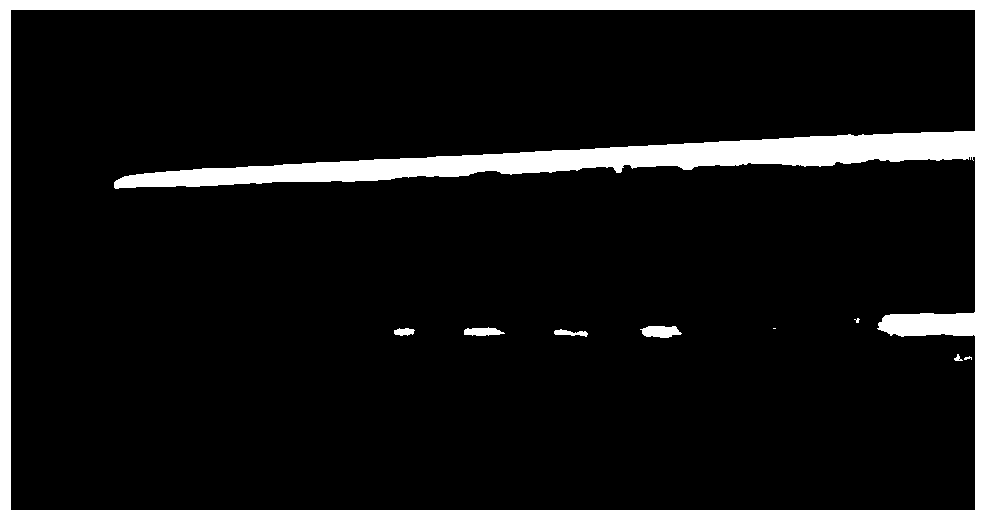High-violacein-yield Janthinobacterium lividum and application thereof
A technology of violacein and violacein, which is applied in the field of violacein producing high-yielding violacein, can solve the problem of reducing the variety of synthetic pigments and achieve good broad-spectrum antibacterial effect
- Summary
- Abstract
- Description
- Claims
- Application Information
AI Technical Summary
Problems solved by technology
Method used
Image
Examples
Embodiment 1
[0030] Embodiment 1, isolation and identification of bacterial strain
[0031] 1. Separation
[0032] 1. Sample collection
[0033] The Guanzhong goat milk was collected from the old chicken store in Xiaotangshan, Changping District, Beijing, refrigerated quickly, and sent back to the laboratory for experiments.
[0034] 2. Isolation and screening of strains
[0035] Prepare separation medium: tryptone 5.0g, yeast extract 2.5g, glucose 1.0g, skimmed milk powder 1.0g, use distilled water to make up to 1000ml, add 18.0g agar, dissolve in 80°C water bath. Prepare a number of clean plates and wrap them with waste newspapers. Sterilize the culture medium and plates at 121°C for 15 minutes. After sterilization, keep the culture medium and the plate warmed to 50-60°C.
[0036] Dilute the sample 10 times with normal saline, take 1.0ml of the 10-2, 10-3, 10-4 gradient sample solution and add it to the sterilized plate, then pour 20-25ml of the culture medium , mix well and wait f...
Embodiment 2
[0051] Embodiment 2, bacterial strain ZSJ produce pigment
[0052] 1. Fermentation of strain ZSJ
[0053] Fermentation medium (nutrient broth medium) ingredients: peptone 10.0g, beef powder 3.0g, sodium chloride 5.0g, glucose 1.0g, distilled water to 1000mL, sterilized at 121°C for 15min, the pH of the fermentation medium for 7. Inoculate the activated strain ZSJ in the fermentation medium according to 2% inoculation amount, culture at 21°C for 168h, centrifuge (4000rpm, 20min), discard the supernatant, and collect the precipitate.
[0054] 2. Pigment extraction
[0055] Add anhydrous methanol to the precipitate, mix it with a vortex mixer, then shake it in an ultrasonic cleaner at room temperature for 1 hour at maximum power, and centrifuge the shaking solution (10000 rpm, 10 minutes) to obtain a methanol solution of the pigment. If there are still pigments remaining in the cell residues, repeat the above steps until no more pigments are extracted.
[0056] 3. Calculation...
Embodiment 3
[0058] Embodiment 3, the physicochemical property detection of the pigment produced by bacterial strain ZSJ
[0059] 1. Photostability
[0060] Add 3ml of undried pigment methanol solution into a 10ml glass test tube with good light transmittance, seal it with a parafilm to prevent methanol volatilization, and place it under natural light for 0h, 3h, 7h, 10h, 14h, each treatment Repeat 3 times. The results showed that after the pigment was irradiated with light for 10 hours, the blue-purple color disappeared and turned into light yellow.
[0061] 2. Acid-base stability
[0062] Add 0.1mol / L HCl or 0.1mol / LNaOH to 2ml of undried pigment methanol solution (pH 7.5) to adjust the pH to: 3, 5, 7, 9, 11, 12, 12.5, 13, 13.5, Observe the color change as Figure 5 As shown in A. Then the pigment methanol solutions with different pH were placed under natural light for 36 hours, and the color of the pigment methanol solutions with different pH all became lighter in different degrees...
PUM
| Property | Measurement | Unit |
|---|---|---|
| Resonant frequency | aaaaa | aaaaa |
Abstract
Description
Claims
Application Information
 Login to View More
Login to View More - Generate Ideas
- Intellectual Property
- Life Sciences
- Materials
- Tech Scout
- Unparalleled Data Quality
- Higher Quality Content
- 60% Fewer Hallucinations
Browse by: Latest US Patents, China's latest patents, Technical Efficacy Thesaurus, Application Domain, Technology Topic, Popular Technical Reports.
© 2025 PatSnap. All rights reserved.Legal|Privacy policy|Modern Slavery Act Transparency Statement|Sitemap|About US| Contact US: help@patsnap.com



